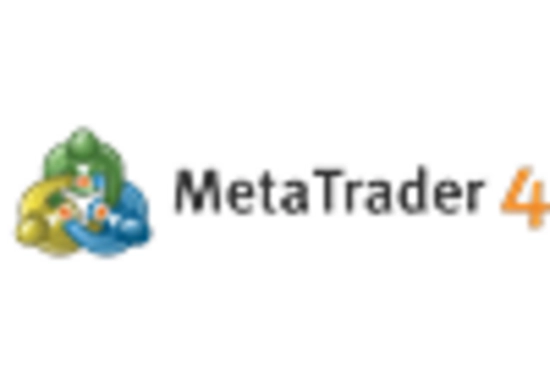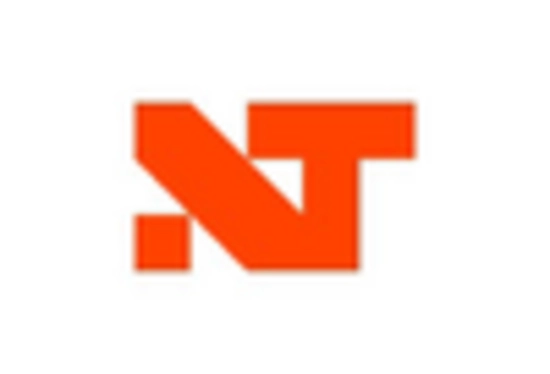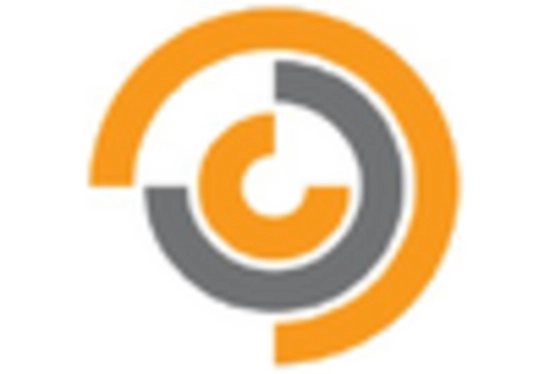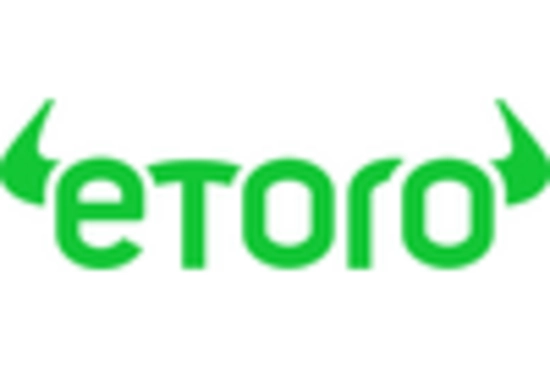The AI Trading Platform Market is currently characterized by a dynamic competitive landscape, driven by rapid technological advancements and increasing demand for automated trading solutions. Key players such as MetaTrader (US), Interactive Brokers (US), and eToro (IL) are strategically positioning themselves through innovation and partnerships, thereby shaping the market's competitive environment. MetaTrader (US) focuses on enhancing user experience through advanced algorithmic trading capabilities, while Interactive Brokers (US) emphasizes its robust trading infrastructure and global reach. eToro (IL), on the other hand, leverages social trading features to attract a diverse user base, indicating a trend towards community-driven trading experiences.
The market structure appears moderately fragmented, with numerous players vying for market share. Key business tactics include localizing services to cater to regional preferences and optimizing supply chains to enhance operational efficiency. This competitive structure allows for a variety of trading platforms, each offering unique features and services, which collectively influence user choice and market dynamics.
In August 2025, eToro (IL) announced a strategic partnership with a leading AI firm to enhance its trading algorithms, aiming to provide users with more personalized trading insights. This move is significant as it underscores eToro's commitment to integrating advanced AI technologies, potentially improving user engagement and retention. Such partnerships may also set a precedent for other platforms to follow suit, thereby intensifying competition in the AI trading space.
In September 2025, Interactive Brokers (US) launched a new suite of AI-driven trading tools designed to assist both novice and experienced traders. This initiative reflects the company's focus on innovation and user empowerment, suggesting that the integration of AI into trading platforms is becoming a critical differentiator. By enhancing its offerings, Interactive Brokers (US) positions itself as a leader in the market, likely attracting a broader clientele seeking sophisticated trading solutions.
In October 2025, MetaTrader (US) unveiled a new feature that allows users to create custom trading bots using a simplified interface. This development is pivotal as it democratizes access to algorithmic trading, enabling a wider range of users to participate in automated trading strategies. Such innovations may not only enhance user satisfaction but also drive market growth by attracting new traders who may have previously felt intimidated by complex trading systems.
As of October 2025, the competitive trends in the AI Trading Platform Market are increasingly defined by digitalization, sustainability, and the integration of AI technologies. Strategic alliances are becoming more prevalent, as companies recognize the value of collaboration in enhancing their technological capabilities. Looking ahead, competitive differentiation is likely to evolve from traditional price-based competition to a focus on innovation, technological advancements, and supply chain reliability, suggesting a transformative shift in how companies engage with their users and the market.


















Leave a Comment